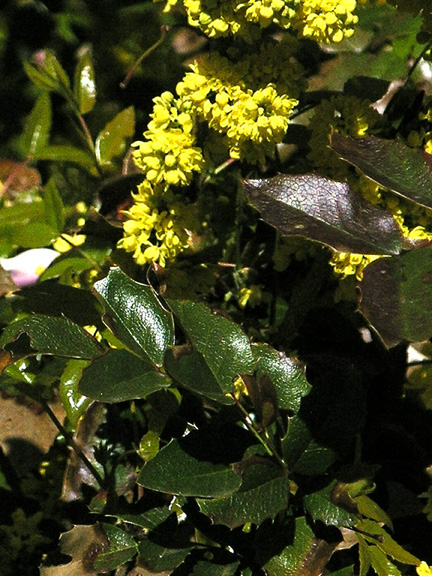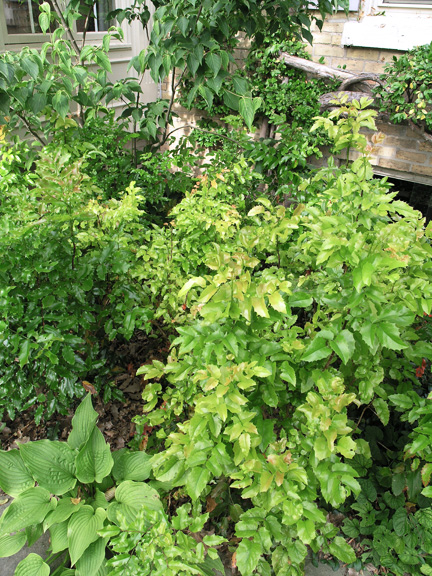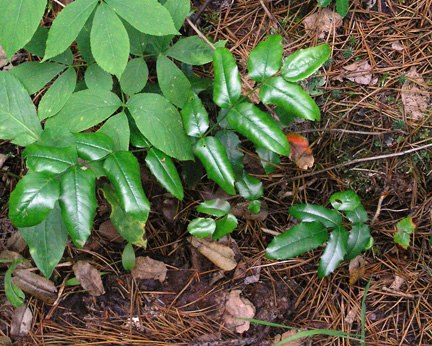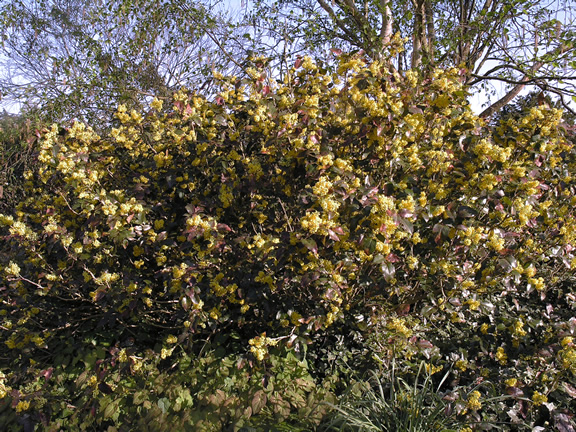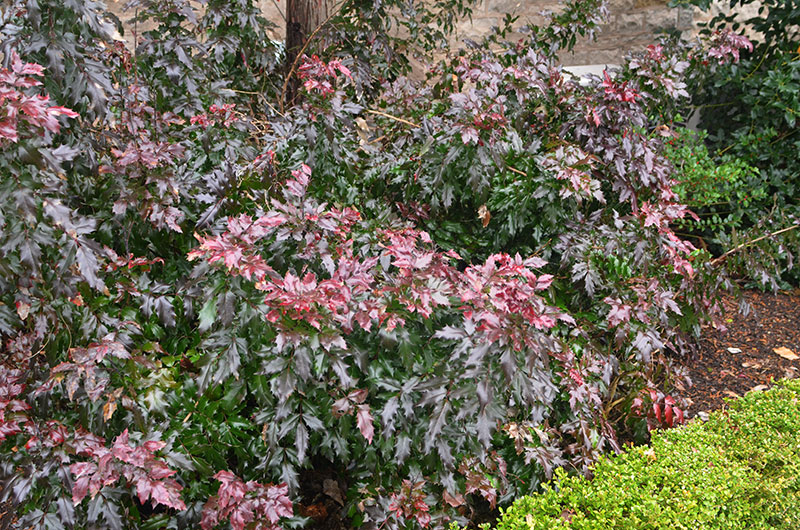
Woody > Berberis > Berberis aquifolium > Berberis aquifolium
Berberis aquifolium
Oregon Grape Holly
Origin: Introduced by Victorian plant collector David Douglas who was employed by the Horticultural Society of London (later to become the Royal Horticultural Society) in the 1920’s. Douglas was killed under suspicious circumstances on his return from the Pacific North-West via Hawaii in 1834 at the age of 35.
| Family |
| Berberidaceae |
| Genus |
| Berberis |
| Species |
| aquifolium |
| Category |
| Woody |
| Type |
| Shrub (evergreen) |
| Synonyms |
| Mahonia aquifolium (Name changed to Berberis aquifolium in 2019) |
| USDA Hardiness Zone |
| 4-7 |
| Canadian Hardiness Zone |
| 5 |
| RHS Hardiness Zone |
| H7 |
| Height |
| 2 m |
| Spread |
| 2 m |
Photographs
Description and Growing Information
Flowering Period
| Landscape |
| Used as a foundation plant, shrub border and as a specimen. Desirable for spring bloom, high quality summer foliage and blue fruit in autumn. |
| Growth |
| Slow |
| ID Characteristic |
| Inner yellow bark, evergreen, pinnately compound leaves, bright yellow flowers in clusters and blue-black fruit. |
| Pests |
| Leaf rusts, leaf spots, barberry aphid, scale, leaf scorch and whitefly. |
| Flower/Leaf Bud Description |
| Rather small, except for the terminal which is ovoid with half-a-dozen exposed scales. |
| Leaf Description |
| Compound pinnate, alternate, evergreen and 16 - 30 cm long. Lustrous dark green above, extremely stiff and leathery, rarely dull and usually turns purple in the winter. |
| Flower Description |
| Borne in fascicled, erect, 5 - 7.5 cm long and are bright yellow in colour. |
| Fruit Description |
| True berry, rounded and blue-black in colour. |
| Colour Description |
| Leaves are reddish bronze when unfolding, changing to light, glossy yellow-green and finally a lustrous dark green in the summer. Leaves are purplish bronze in autumn and winter. |
| Ethnobotanical Uses (Disclaimer) |
| The Plateau Indian tribes in British Columbia, Canada used it for food and to treat indigestion. |
